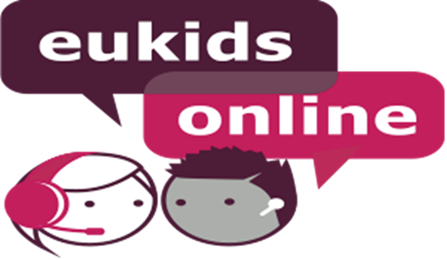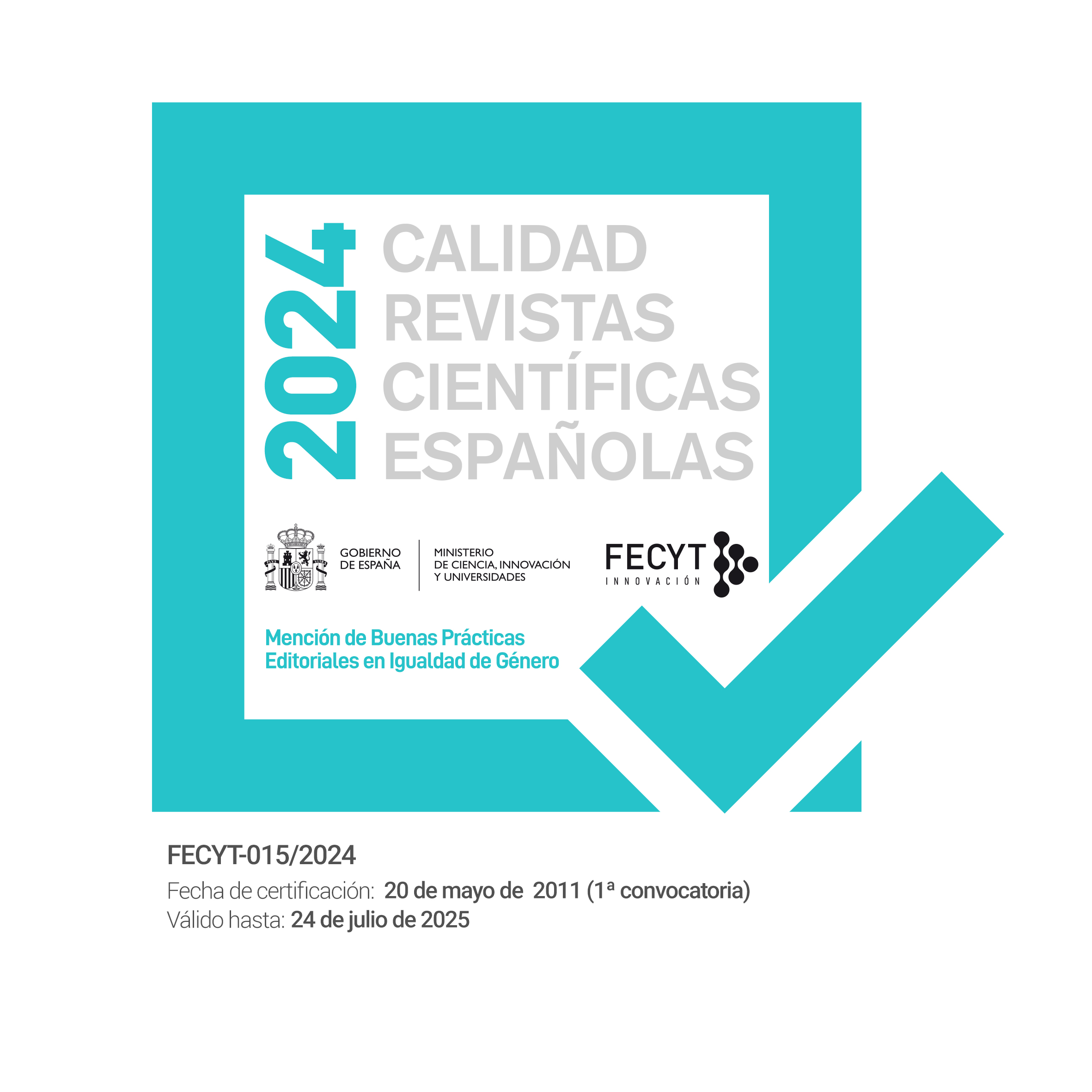Parental attitudes towards the cyberbullying experienced by their children
DOI:
https://doi.org/10.30827/relieve.v28i2.24075Keywords:
cyberbullying, children, parental mediation, internetAbstract
Online risk situations faced by children have been extensively studied from a child perspective, while research is scarcer from a parental perspective. This article aims to understand what knowledge parents have regarding online situations with unpleasant consequences as cyberbullying. It also explores how parents react to these situations and what factors of the socio-familial context may influence their perceptions and reactions. The analysis is based on the results of a survey to families of Spain, carried out in 2019, on a nationally representative sample of 850 parents with children between 9-17 years old. The results showed that from the families' perspective, cyberbullying situations to which their children are exposed are not frequent; the vast majority of fathers and mothers do not perceive it in their children. A 44% of parents have the perception that their children are able to cope with unpleasant situations, and this correlates to the age of the child, being higher in adolescents. An 83% of parents feel very able to help their children to cope with upsetting situations. Parent´s awareness of cyberbullying is related to family conflict situations they experience with their children. Higher levels of reverse mediation are observed among adolescents, who report more unpleasant situations experienced online to their parents than younger children who are the least likely to report these experiences to their parents and tend to be monitored more by their parents.
Downloads
References
Anar y Mútua Madrileña Fundaciones. (2018) III Estudio sobre acoso escolar y ciberbullying según los afectados. https://www.bienestaryproteccioninfantil.es/fuentes1.asp?sec=10ysubs=491ycod=3699ypage
Bartau-Rojas, I., Aierbe, A., & Oregui, E. (2020). Mediación parental del uso de Internet desde una perspectiva de género. Revista Electrónica de Investigación Educativa, 22,1-14. https://doi.org/10.24320/redie.2020.22.e02.2075
Buelga, S. (2013). El cyberbullying: Cuando la red no es un lugar seguro. In E. Estévez (Ed.), Los problemas en la adolescencia: Repuestas y sugerencias para padres y profesionales (pp.121-140). Síntesis. https://www.sintesis.com/manuales-practicos-109/los-problemas-en-la-adolescencia-libro-1799.html
Buelga, S., Cava, M. J., & Musitu, G. (2012). Reputación social, ajuste psicosocial y victimización entre adolescentes en el contexto escolar. Anales de Psicología, 28(1), 180-187. https://revistas.um.es/analesps/article/view/140652
Burgess, J., & McLoughlin, C. (2012). Investigating cyberbullying: emerging research and e-safety strategies within families and communities.Communities, Children and Families Australia, Volume 6, Issue 1, June 2012. https://search.informit.org/doi/10.3316/informit.303496391868437
Cohen-Almagor, R. (2018). Social responsibility on the Internet: Addressing the challenge of cyberbullying. Aggression and violent behaviour,39,42-52. https://doi.org/10.1016/j.avb.2018.01.001
Cross, D., Shaw, T., Hearn, L., Epstein, M., Monks, H., Lester, L., & Thomas L. (2009). Australian covert bullying prevalence study (ACBPS). https://docs.education.gov.au/system/files/doc/other/australian_covert_bullying_prevalencestudy_executive_summary.pdf
Dedkova, L., & Smahel, D. (2019). Online Parental Mediation: Associations of Family Members’ Characteristics to Individual Engagement in Active Mediation and Monitoring. Journal of Family Issues. Vol. 41 (8) 1112–1136. https://doi.org/10.1177/0192513X19888255
Dedkova, L., Smahel, D., & Just, M. (2020). Digital security in families: the sources of information related to the active mediation of internet safety and parental internet skills. Behaviour y Information Technology. https://doi.org/10.1080/0144929X.2020.1851769
Del Rey, R., Estévez, M., & Ojeda, M. (2018). El ciberbullying y su respuesta educativa. En Jiménez, Garmendia, Casado, Entre selfies y whatsapps. Oportunidades y riesgos para la infancia y la adolescencia conectada, (125-139). Gedisa. https://www.gedisa.com/gacetillas/500464.pdf
Düerager, A., & Livingstone, S. (2012). How can parents support children’s Internet safety? EU Kids Online, LSE. https://bit.ly/3636fK8
Dürager, A., & Sonck, N. (2014) Testing the reliability of scales on parental internet mediation. http://eprints.lse.ac.uk/id/eprint/60220
Eden, S., Heiman, T., & Olenik-Shemesh, D. (2014). Bully versus Victim on the Internet: The Correlation with Emotional-Social Characteristics. Education and Information Technologies, 21, 699-713. https://doi.org/10.1007/s10639-014-9348-2
Ergin, D.A., & Kapçi, E.G. (2019). Validity and reliability study of parental mediation for Internet usage scale Adolescent and Parent Forms in the Turkish Sample. Journal of Measurement and Evaluation in Education and Psychology, 10(2), 117-132. https://doi.org/10.21031/epod.457218
Estévez, A., Villardón, L., Calvete, E., Padilla P., & Orue, I. (2010). Adolescentes víctimas de cyberbullying: prevalencia y características. Behavioral Psychology /Psicología Conductual, 18(1), 73-89. https://www.behavioralpsycho.com/producto/adolescentes-victimas-de-cyberbullying-prevalencia-y-caracteristicas/
Garmendia, M., Garitaonandia, C., Martínez, G., & Casado del Rio, M.A. (2012) Los menores en internet. Usos y seguridad desde una perspectiva europea Quaderns del CAC, 38, 37– 44. https://www.ehu.eus/es/web/eukidsonline/-/los-menores-en-internet-usos-y-seguridad-desde-una-perspectiva-europea
Garmendia, M., Jiménez, E., Karrera, I., Larrañaga, N., Casado, M.A., Martínez, G., & Garitaonandia, C. (2019a). Actividades, Mediación, Oportunidades y Riesgos online de los menores en la era de la convergencia mediática. Instituto Nacional de Ciberseguridad (INCIBE). http://hdl.handle.net/10810/49632
Garmendia, M., Jiménez, E., & Larrañaga, N. (2019b). Bullying y ciberbullying: victimización, acoso y daño. Necesidad de intervenir en el entorno escolar | Bullying and cyberbullying: victimisation, harassment, and harm. The need to intervene in the educational centre. Revista Española de Pedagogía,77 (273), 295-312 https://doi.org/10.22550/REP77-2-2019-08
Garmendia, M., Martínez, G., Larrañaga, N., Jiménez, E., Karrera, I, Casado, M.A., & Garitaonandia, C., (2020). Las madres y los padres en la convergencia mediática: competencias, mediación, oportunidades y riesgos online. Universidad del País Vasco (UPV/EHU). http://hdl.handle.net/10810/49633
Ghamrawi, N., & Al-Jammal, K. (2013). Cyberbullying in schools: a new technique for an old practice! Leadership awareness versus school reality. Global Advanced Research Journal of Educational Research and Review.Vol.2 (12) pp. 246-253. http://garj.org/garjerr/index.htm
Gómez Ortiz, O., Apolinario, C., Romera, E. M. & Ortega Ruiz, R. (2019). The Role of Family in Bullying and Cyberbullying Involvement: Examining a New Typology of Parental Education Management Based on Adolescents’ View of Their Parents. Social Science, 8 (1). https://doi.org/10.3390/socsci8010025
Hasebrink, U., Görzig, A., Haddon, L., Kalmus, V., & Livingstone, S. (2011). Patterns of risk and safety online: In-depth analyses from the EU Kids Online survey of 9- to 16- year-olds and their parents in 25 European countries. Deliverable D5. EU Kids Online, LSE. http://eprints.lse.ac.uk/39356/
Helsper, E.J., Kalmus, V., Hasebrink, U., Ságvári, B., & de-Haan, J. (2013). Country classification: Opportunities, risks, harm and parental mediation. EU Kids Online, LSE. http://eprints.lse.ac.uk/52023/
Hinduja, S., & Patchin, J.W., (2008). Cyberbullying: an exploratory analysis of factors related to offending and victimization. Deviant Behavior, 29, 129-156. https://doi.org/10.1080/01639620701457816
Hinduja, S., & Patchin, J.W., (2011). Cyberbullying: a review of the legal issues facing educators. Preventing School Failure: Alternative Education for Children and Youth. 55(2),71–78. http://dx.doi.org/10.1080/1045988X.2011.539433
Iranzo, B., Buelga, S., Cava, M. J., & Ortega-Barón, J. (2019). Cyberbullying, psychosocial adjustment, and suicidal ideation in adolescence. Psychosocial Intervention, 28,75-81. https://doi.org/10.5093/pi2019a5
Levy, N., Cortesi, S., Crowley, E., Beaton, M., Casey, J., & Nolan, C. (2012). Bullying in a networked era: A literature review. Berkman Center Research Publication, 17. http://cyber.law.harvard.edu/publications/2012/kbw_bulling_in_a_networked_era
Liu, C., Ang, R. P., & Lwin, M. O. (2013). Cognitive, personality, and social factors associated with adolescents’ online personal information disclosure. Journal of Adolescence, 36(4), 629–638. https://doi.org/10.1016/j.adolescence.2013.03.016
Livingstone, S., Haddon, L., Görzig, A., Levy, N., Cortesi, S., Crowley, E., Beaton, M., Casey, J., & Nolan, C. (2012). Bullying in a networked era: A literature review Ólafsson, K. (2011a). Risks and safety on the internet: The perspective of European children. Full findings. EU Kids Online: LSE. http://eprints.lse.ac.uk/33731/
Livingstone, S., Haddon, L., Görzig, A., & Ólafsson (2011b) Technical report and user guide: the 2010 EU Kids Online Survey. LSE, London: EU Kids Online. http://eprints.lse.ac.uk/45270/
Livingstone, S., Ólafsson, K., Helsper, E. J., Lupiáñez-Villanueva, F., Veltri, G. A., & Folkvord, F. (2017). Maximizing opportunities and minimizing risks for children online: The role of digital skills in emerging strategies of parental mediation. Journal of Communication, 67(1), 82-105. https://doi.org/10.1111/jcom.12277
Livingstone, S. & Blum-Ross, A. (2018) Imagining the future through the lens of the digital: Parents’ narratives of generational change. In Papacharissi, Z. A networked self: Birth, life, death. pp. 50-68. Routledge. http://eprints.lse.ac.uk/87750/
Livingstone, S. & Blum-Ross, A. (2020). Parenting for a digital future: how hopes and fears about technology shape children’s lives. Oxford University Press. https://www.lse.ac.uk/media-and-communications/research/research-projects/parenting-for-a-digital-future
López-de-Ayala, M.C., Pastor, E.M., & García, B.C. (2019). Nuevas estrategias de mediación parental en el uso de las redes sociales por adolescentes. El Profesional de la Información, 28(5), 17. https://doi.org/10.3145/epi.2019.sep.23
Mascheroni, G., & Cuman, A.(2014). Net Children Go Mobile. Final report. Deliverables D6.4yD5.2. Educatt. https://netchildrengomobile.eu/reports
Menesini, E., Nocentini, A., Palladino, B.E., Frisén, A., Berne, S., Ortega-Ruiz, R., Calmaestra, J., Scheithauer, H., Schultze-Krumbholz, A., Luik, P., Naruskov, K., Blaya, C., Berthaud, J., & Smith, P.K. (2012). Cyberbullying definition among adolescents: a comparison across six European countries. Cyberpsychology, behavior, and social networking,15 (9), 455-463. https://doi.org/10.1089/cyber.2012.0040
Mustaqim, M. A., Nizam, M. B., Hakim, M. F., & Hadi, A. A. (2021) Parental awareness over their children’s internet usage: a review. International Journal for Studies on Children, Women, Elderly And Disabled, Vol. 12, 30-35 https://www.ijcwed.com/wp-content/uploads/2021/03/IJCWED12-25.pdf
Nelissen, S., & den Bulck J.V. (2017), When digital natives instruct digital immigrants: active guidance of parental media use by children and conflict in the family. Information, Communication y Society, 21(3)375-387. https://doi.org/10.1080/1369118X.2017.1281993
Nocentini, A., Fiorentini, G., Di Paola, L., & Menesini, E. (2019). Parents, family characteristics and bullying behavior: A systematic review. Aggression and violent behavior, 45, 41-50. https://doi.org/10.1016/j.avb.2018.07.010
Ortega-Baron, J., Buelga, S., & Cava, M. J. (2016). The influence of school climate and family climate among adolescents victims of cyberbullying. Comunicar, 24(46),57-65. http://dx.doi.org/10.3916/C46-2016-06
Ovejero, A., Smith, P. K., Yubero, S. (Coord.) (2013). El acoso escolar y su prevención: perspectivas internacionales. Biblioteca Nueva. https://www.iberlibro.com/ACOSO-ESCOLAR-PREVENCION-Perspectivas-internacionales-Anastasio/11359731804/bd
Patchin, J. W., & Hinduja, S. (2011). Traditional and nontraditional bullying among youth: A test of general strain theory. Youth and Society, 43, 727-751. https://doi.org/10.1177/0044118X10366951
Pfetsch, J. (2016). Who is who in cyberbullying? Conceptual and empirical perspectives on bystanders in cyberbullying. In M.F. Wright (ed.) A social-ecological approach to cyberbullying (pp.121–49). Nova Science Publishers. https://novapublishers.com/shop/a-social-ecological-approach-to-cyberbullying/
Prenski, M. (2001). Digital Natives, Digital Immigrants. On the Horizon. MCB University Press, Vol. 9 No. 5, October. http://portafoli.ub.edu/portfolios/jlrodriguez/4571/last/media/prensky-1.pdf
Ramos-Soler, I., López-Sánchez, C., & Torrecillas-Lacave, T. (2018). Online risk perception in young people and its effects on digital behaviour. [Percepción de riesgo online en jóvenes y su efecto en el comportamiento digital]. Comunicar, 56, 71-79. https://doi.org/10.3916/C56-2018-07
Rideout, V.J., Foehr, U.G., & Roberts, D.F. (2010). Generation M 2: Media in the lives of 8- to 18-year-olds. Kaiser Family Foundation. https://eric.ed.gov/?id=ED527859
Romera, E.M., Luque-González, R., García-Fernández, C.M. y Ortega-Ruiz, R. (2022). Competencia social y bullying: el papel de la edad y el sexo. Educación XX1, 25 (1), 309-333. https://doi.org/10.5944/educxx1.25.1
Sabella, R. A. (2012). Cyberbullying: How school counselors can help. In J. W. Patchin & S. Hinduja (Eds.), Cyberbullying prevention and response: Expert perspectives. Routledge. https://www.routledge.com/Cyberbullying-Prevention-and-Response-Expert-Perspectives/Patchin-Hinduja/p/book/9780415892377
Shin, W., & Lwin, M. O. (2017). How does “talking about the Internet with others” affect teenagers’ experience of online risks? The role of active mediation by parents, peers, and school teachers. New Media y Society, 19(7), 1109-1126. https://doi.org/10.1177/1461444815626612
Smahel, D., Machackova, H., Mascheroni, G., Dedkova, L., Staksrud, E., Ólafsson, K., Livingstone, S., & Hasebrink, U. (2020). EU Kids Online 2020: Survey results from 19 countries. EU Kids Online. https://doi.org/10.21953/lse.47fdeqj01ofo
Smith, P. K., & Slonje, R. (2010). Cyberbullying: The nature and extent of a new kind of bullying, in and out of school. In S. R. Jimerson, S. M. Swearer, & D. L. Espelage(Eds.) Handbook of bullying in schools: An international perspective (pp.249–262). Routledge. https://psycnet.apa.org/record/2010-06797-000
Udris, R. (2015). Cyberbullying in Japan: an exploratory study. International Journal of Cyber Society and Education, Vol.8(2) 59-80. http://dx.doi.org/10.7903/ijcse.1382
Ybarra, M. L., and Mitchell, K. J. (2004). Youth engaging in online harassment: Associations with caregiver–child relationships, Internet use, and personal characteristics. Journal of Adolescence, 27(3), 319–336. https://doi.org/10.1016/j.adolescence.2004.03.007
Yiğit, M., Keskin, S. & Yurdugül, H. (2018). Investigating the relationship between cyberbullying and perceived family support in middle-school students in relation to gender, frequency of Internet use, and grade. Addicta: The Turkish Journal on Addiction, 5, 249–284. http://dx.doi.org/10.15805/addicta.2018.5.2.0050
Yot-Domínguez, C., & Cotán Fernández, A. (2020). Las familias en la investigación sobre el ciberbullying. Edutec. Revista Electrónica de Tecnología Educativa, (73), 140-156. https://doi.org/10.21556/edutec.2020.73.1537
Zlamal, R., Machackova, H., Smahel, D., Abramczuk, K., Ólafsson, K., & Staksrud, E. (2020). EUKids Online 2020: Technical report. EU Kids Online. https://doi.org/10.21953/lse.04dr94matpy7

Downloads
Published
How to Cite
Issue
Section
License
Copyright (c) 2022 RELIEVE-Revista Electr´ónica de Investigación y Evaluación Educativa

This work is licensed under a Creative Commons Attribution-NonCommercial 4.0 International License.
The authors grant non-exclusive rights of exploitation of works published to RELIEVE and consent to be distributed under the Creative Commons Attribution-Noncommercial Use 4.0 International License (CC-BY-NC 4.0), which allows third parties to use the published material whenever the authorship of the work and the source of publication is mentioned, and it is used for non-commercial purposes.
The authors can reach other additional and independent contractual agreements, for the non-exclusive distribution of the version of the work published in this journal (for example, by including it in an institutional repository or publishing it in a book), as long as it is clearly stated that the Original source of publication is this magazine.
Authors are encouraged to disseminate their work after it has been published, through the internet (for example, in institutional archives online or on its website) which can generate interesting exchanges and increase work appointments.
The fact of sending your paper to RELIEVE implies that you accept these conditions.

















